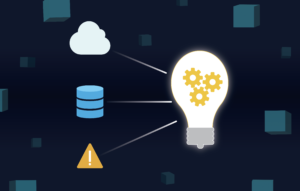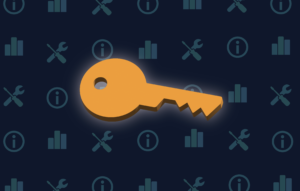Blog Team
Congruity360 Marketing
Data classification is the process of organizing and categorizing data into various types, forms or any other distinct class. This process is crucial for data management, data privacy, compliance adherence, and security. Data classification helps organizations to maintain data consistency, standardization, and control over their digital assets.
Data classification involves recognizing sensitive data, such as personal information or financial transactions, and determining the level of protection that is needed for each type of data. This enables organizations to properly secure their data and protect it from unauthorized access or misuse.
Organizations often use data classification to refine their data access policies and define rules for how different types of data should be handled.
Importance of Data Classification
Data classification is pivotal for an organization’s data management strategy. It provides a clear understanding of the data’s sensitivity and value, facilitating informed decision-making about resource allocation for data protection. A well-executed data classification strategy can prevent data breaches by ensuring that sensitive data receives an appropriate level of protection based on its classification.
Additionally, data classification aids in regulatory compliance. Laws vary by jurisdiction regarding data protection and privacy, such as GDPR in Europe or CCPA in California. Effective data classification helps companies in identifying the data that falls under such regulations and ensuring its proper handling to avoid hefty penalties.
Data classification also enhances data visibility and accessibility. By grouping similar types of data together, it becomes easier to locate and retrieve specific data when needed, improving operational efficiency. The bottom line is that the importance of data classification lies in its ability to bolster security, facilitate compliance, and improve data management across the organization.
Types of Data Classification
Data classification can be categorized into three primary types:
- Content-Based Classification: This type of classification involves analyzing the content of the data to understand its sensitivity. For instance, a document containing credit card information or personal identification numbers would be classified as confidential.
- Context-Based Classification: This involves classifying data based on where it’s used or how it’s applied within the organization. It considers factors like the data’s source, what applications process it, and who has access to it.
- User-Based Classification: In this type, data classification is performed based on the creator of the data or the owner. Users themselves classify data based on their understanding of the sensitivity or importance of the data.
Each type of classification has its strengths and corresponds to different sets of requirements. It’s crucial for an organization to choose the most suitable classification method based on its unique needs and the nature of its data. Often, organizations find that a combination of these methods provides the most robust and effective data classification strategy.
Methods of Data Classification
Data classification can be performed using various methods which primarily include manual classification, automated classification, and hybrid classification.
- Manual Classification: In this method, individuals are responsible for classifying the data they handle. This method heavily relies on the user’s judgment and understanding of the data. While this can be effective for small-scale data, it can be time-consuming and prone to human error, especially when dealing with large volumes of data.
- Automated Classification: Automated classification leverages machine learning algorithms and predefined rules to automatically categorize data. This method can efficiently handle large amounts of data, reducing human error and saving time. However, it requires a well-defined set of rules and may not fully understand the context of the data.
- Hybrid Classification: As the name suggests, this method combines both manual and automated classification. It uses automated techniques for initial classification and relies on human intervention for final verification or for handling complex data. This method can effectively balance the scale of automated classification with the precision of manual classification.
Choosing the right method depends on various factors including the volume of data, its complexity, the sensitivity level, and the organization’s resources. It’s imperative to evaluate each method thoroughly, considering the unique needs and constraints of the organization, to ensure effective and efficient data classification.
Data Classification Process
The data classification process typically involves the following steps:
- Identify Data: The first step is to identify the data that needs to be classified. This includes all forms of data like digital, physical, and personal data.
- Define Categories: After identifying the data, the next step is to define the categories for classification. These categories might be based on sensitivity (public, internal, confidential, etc.), regulatory requirements (PCI, HIPAA, GDPR, etc.), or business value.
- Tag & Classify Data: This step involves assigning categories to the identified data. Depending on the chosen method, this could be done manually by the data owner, automatically by machine learning algorithms, or via a hybrid approach.
- Implement Security Controls: Once the data is classified, appropriate security controls are put into place. This could involve encryption, access controls, or other measures based on the category of data.
- Train & Educate Staff: The staff needs to be trained and educated about the classification scheme, how to classify data, and the importance of maintaining the classified data’s security.
- Audit & Review: Regular audits need to be conducted to ensure the classification scheme is followed and effective. The process and categories should be reviewed and updated as necessary to stay aligned with evolving business needs and regulations.
This process helps an organization maintain control over its data, enhance security, improve data management, and adhere to compliance regulations. Each step is as important as the other and skipping even one step could potentially lead to data misclassification, breaches, and non-compliance with regulations. Therefore, thoroughness and diligence are crucial at every stage of the data classification process.
Applications of Data Classification
Data classification has a wide range of applications that enhance several aspects of an organization’s operation. Here are a few notable examples:
- Data Security: Data classification plays a critical role in the organization’s data security strategy. By classifying data based on sensitivity, organizations can implement appropriate security measures for each data class, ensuring that sensitive data is adequately protected.
- Access Control: With data classification, access to data can be managed more effectively. Different classes of data can be accessed by different levels of employees, ensuring that sensitive data is only accessible to authorized personnel.
- Regulatory Compliance: Many industries are subject to regulatory requirements related to data handling. Proper classification of data can help organizations meet these requirements by properly protecting sensitive data and demonstrating their compliance with regulations.
- Data Management: Data classification helps in efficient data management. It makes it easier for employees to locate and retrieve data, improving productivity and reducing the time spent searching for information.
- Risk Management: By identifying and categorizing sensitive data, organizations can evaluate potential risks and vulnerabilities, and implement measures to mitigate those risks.
- Data Lifecycle Management: Data classification aids in managing the data lifecycle. It assists in determining when data should be archived or deleted, based on its value to the organization.
Future Trends in Data Classification
Looking ahead, several trends are expected to shape the future of data classification:
- Artificial Intelligence and Machine Learning: These technologies can handle large volumes of data, improve the accuracy of classification, and even learn from prior classifications to enhance future performance.
- Integration with Data Protection Solutions: This will allow for dynamic adjustments of security measures based on the classification of data, enhancing security and efficiency.
- Increased Regulatory Pressure: This will make data classification even more crucial for businesses to maintain compliance.
- Cloud-based Data Classification: These services offer scalability, flexibility, and cost-effectiveness, making them an attractive option for businesses, especially small to medium-sized ones.
- Advanced Classification Techniques: These techniques could include semantic analysis, natural language processing, and more.
In the future, data classification is projected to become even more intelligent, automated, and integrated with other aspects of data management and security. As these trends materialize, businesses that adapt and implement these advancements will be better positioned to handle their data securely and efficiently.
Congruity360 Solutions for Data Classification
Congruity360’s data classification solution utilizes advanced algorithms to classify data accurately and efficiently. This helps organizations protect sensitive data, comply with regulatory standards, and streamline data management process.
In the evolving landscape of data management and security, Congruity360 stands out for its commitment to innovation and its comprehensive suite of solutions. As future trends in data classification emerge, businesses can trust Congruity360 to stay ahead of the curve and provide the advanced, effective solutions needed to handle data securely and efficiently. Explore our platform to learn how you can harness the power of data with Congruity360 today.









